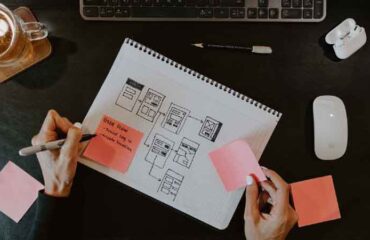
The choice of language or technology and the corresponding database for a project’s development depends on various factors, including the project’s requirements, goals, and constraints. Here are some common scenarios and suitable choices:
-
Web Development:
- Language/Technology: HTML, CSS, JavaScript, PHP, Python, Ruby, Java, .NET, etc.
- Database: MySQL, PostgreSQL, MongoDB, SQLite, or SQL Server, depending on data structure and scalability requirements.
-
Mobile App Development:
- Language/Technology: Java or Kotlin for Android, Swift or Objective-C for iOS, or cross-platform frameworks like React Native or Flutter.
- Database: SQLite for local storage, and RESTful APIs or cloud-based databases for data synchronization.
-
E-commerce Website:
- Language/Technology: E-commerce platforms like Magento, WooCommerce (WordPress), Shopify, or custom development using PHP, Python, Ruby on Rails, etc.
- Database: MySQL or PostgreSQL for product and customer data.
-
Enterprise Software:
- Language/Technology: Java, C#, or JavaScript (Node.js) for server-side development. A mix of technologies for the front-end.
- Database: PostgreSQL, Oracle, SQL Server, or other enterprise-grade databases, depending on scalability and data security requirements.
-
Data Analytics Platform:
- Language/Technology: Python (with libraries like Pandas and NumPy), R, or a Big Data technology stack (Hadoop, Spark, etc.).
- Database: Hadoop Distributed File System (HDFS), NoSQL databases (e.g., Cassandra), or cloud-based data warehouses like Amazon Redshift or Google BigQuery.
-
IoT (Internet of Things) Application:
- Language/Technology: Embedded C/C++ for IoT devices, Python, or Node.js for data processing, and mobile app development for user interfaces.
- Database: NoSQL databases like MongoDB, and cloud-based storage for scalability.
-
Blockchain Application:
- Language/Technology: Solidity for smart contracts, JavaScript or TypeScript for dApps (decentralized applications).
- Database: Distributed ledgers and decentralized databases specific to the blockchain platform (e.g., Ethereum, Hyperledger Fabric).
-
Machine Learning and AI:
- Language/Technology: Python with libraries like TensorFlow, PyTorch, or scikit-learn.
- Database: NoSQL or SQL databases, depending on data structure and machine learning model requirements.
-
Game Development:
- Language/Technology: Game engines like Unity (C#), Unreal Engine (C++), or custom development using C++ or other languages.
- Database: Often custom-designed databases for game state and player data.
-
Content Management System (CMS):
- Language/Technology: WordPress (PHP), Drupal, Joomla, or custom development using PHP, Python, Ruby, etc.
- Database: MySQL or PostgreSQL for content storage.
The choice of language, technology, and database should be made after a thorough analysis of the project’s specific needs, scalability requirements, budget, and the development team’s expertise. It’s essential to align these choices with the project’s goals to ensure its success.



